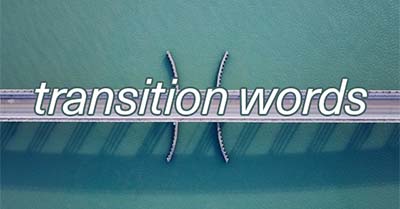Email this series
Transition words are words or expressions that connect two ideas. They create a bridge between ideas while showing how they are related to one another.
We typically learn about them in school in the context of reading and writing; however, we use transitions in everyday conversations without even thinking of it. In fact, I just used two in this paragraph. You can even find transitions in music, movies, and graphic design.

Diva Plavalaguna | Pexels
Video Activity
Note. You can watch the video or read this page first, whichever you prefer.
What Transitions Are
The easiest way to understand transitions is to see them in use. How would you express the following three ideas?
I wanted to go for a walk.
It started raining.
I stayed home.
You probably would not simply say or write these ideas one after the other even though the message would make sense.
Instead, you would more likely combine the ideas and use transition words to show the relationships between the ideas
I wanted to go for a walk, but it started raining, so I stayed home.
(Note that the transition words in these examples are shown in bold.)
There is no “special formula” for combining these ideas as the language gives us flexibility. For the above ideas, you could also come up with any of the following:
Though I wanted to go for a walk, it started raining, so I stayed home.
I wanted to go for a walk; however, I stayed home because it started raining.
In more formal, written language, you can even come up with the following sentences combining the same ideas:
Although I wanted to go for a walk, it started raining; therefore, I stayed home.
I wanted to go for a walk; nonetheless, I stayed home as it started raining.
On the next few pages, let’s go over common transitions words or expressions: coordinating conjunctions, subordinating conjunctions, conjunctive adverbs, and more. Some are quite simple; others can be sophisticated and will improve your reading and writing quite a bit.
Up Next: Coordinating Conjunctions as Transition Words
Continue the lesson to learn how to use coordinating conjunctions as transition words.
Thank you for Supporting Snap Language
Snap Language supporters make the creation of these materials possible.
Learn how you can support our work, get perks, and help us continue creating high-quality materials.
You can support us by simply white-listing this site.